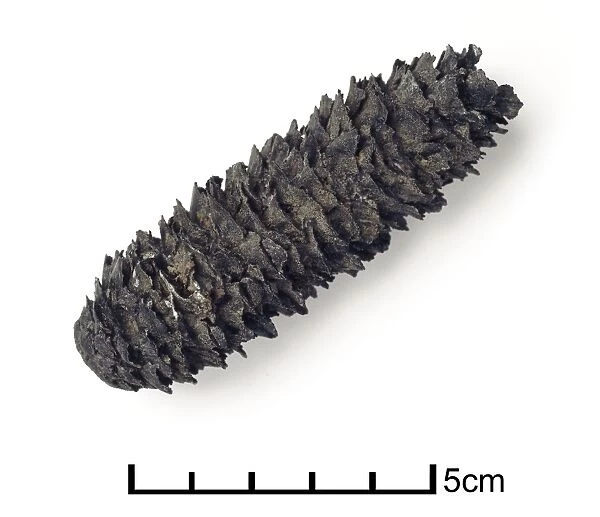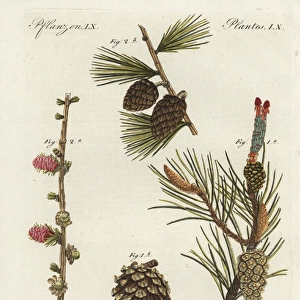Home > Europe > United Kingdom > England > Norfolk > Mundesley
Picea excelsa, fossilised spruce cone
![]()

Wall Art and Photo Gifts from Mary Evans Picture Library
Picea excelsa, fossilised spruce cone
Shown here is the fossilised cone of (Picea excelsa), a spruce tree dating from the Pleistocene and approximately 500, 000 years old. Originates from Cromer Forest, Mundesley, Norfolk, UK
Mary Evans Picture Library makes available wonderful images created for people to enjoy over the centuries
Media ID 8605677
© Mary Evans Picture Library 2015 - https://copyrighthub.org/s0/hub1/creation/maryevans/MaryEvansPictureID/10710933
Cenozoic Cone Conifer Coniferae Coniferophyta Coniferous Cromer Forest Fossil Fossilised Great Britain Gymnosperm Norfolk Phanerozoic Picea Pinaceae Pinales Pinophyta Pinopsida Pleistocene Prehistoric Quaternary Quaternary Epoch Spruce
FEATURES IN THESE COLLECTIONS
> Europe
> United Kingdom
> England
> Norfolk
> Cromer
> Europe
> United Kingdom
> England
> Norfolk
> Mundesley
EDITORS COMMENTS
1. Title: A Window into the Past: The Fossilised Spruce Cone of Picea excelsa from Cromer Forest, Norfolk, UK 2.. This image showcases a fossilised cone of Picea excelsa, an ancient spruce tree that once thrived during the Pleistocene epoch, around 500,000 years ago. Discovered in Cromer Forest, Mundesley, Norfolk, UK, this remarkable fossil offers a glimpse into the prehistoric world of Britain's past. Belonging to the Pinaceae family, Picea excelsa is a coniferous tree, which means it is a type of conifer that produces seeds enclosed in cones. Conifers are an essential part of the Pinophyta division, also known as the coniferophytes, and are characterized by their needle-like leaves and seed-bearing cones. During the Quaternary epoch, which falls within the Cenozoic era and the Phanerozoic eon, Picea excelsa was one of the dominant conifer species in Europe. This fossilised cone is a testament to the rich biodiversity of the region during the Pleistocene, an epoch marked by repeated glaciations and climatic fluctuations. The fossilised cone's intricate structure and exceptional preservation offer a tangible connection to the prehistoric world. It is a reminder of the resilience and adaptability of life, as well as the ever-changing landscape of our planet. As you gaze upon this ancient relic, imagine the lush, vibrant forest that once stood where Cromer Forest lies today. The fossilised cone of Picea excelsa serves as a poignant reminder of the rich history hidden within our natural world.
MADE IN AUSTRALIA
Safe Shipping with 30 Day Money Back Guarantee
FREE PERSONALISATION*
We are proud to offer a range of customisation features including Personalised Captions, Color Filters and Picture Zoom Tools
SECURE PAYMENTS
We happily accept a wide range of payment options so you can pay for the things you need in the way that is most convenient for you
* Options may vary by product and licensing agreement. Zoomed Pictures can be adjusted in the Cart.



